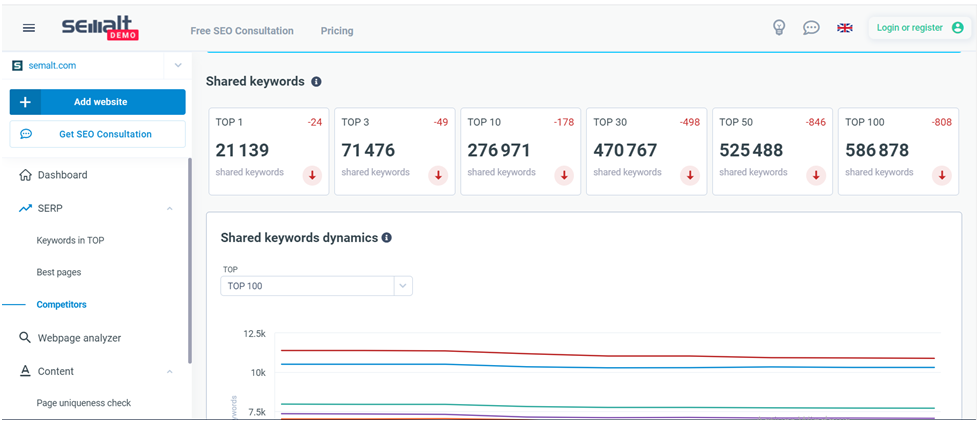Building A Good SEO Background With Semalt

SEO facilities - this term appears in numerous industry publications and guides. More than one entrepreneur heard it in a conversation with a specialist positioning his / her website. Regardless of whether we are professionally engaged in positioning or we want to promote our business in the search engine, we should know what the SEO base is.
Back-end pages in the positioning
Since the inception of the Google search engine, external links have been crucial in building the visibility of a website. The algorithm that evaluates the value of a website based on links that lead to it has undergone major changes. Linking, however, has not lost its value and is still one of the main ranking factors determining high positions in Google.
Building SEO facilities is a key element of the link-building strategy, which must be implemented comprehensively in order to bring effects that are adequate to the investment.
In this article, I will present the most important tips to keep in mind when creating positioning facilities for any website or online store.
What is SEO backend?
Before we get into the specifics, it's worth knowing the meaning behind the concept of 'back-end'. It can be either a single website or an entire collection of websites. They are often blogs, but also forums or so-called micro-services - containing offer subpages corresponding to the services or products offered. While the types of the backend can be different and really depend on the creativity of the creator, they all have a common goal - linking to the parent page. What is published? The structure, subject matter and content that you use to fill in the back page- will not matter for the promoted website, if you do not add links to it.
SEO facilities should in themselves be a valuable source of information for the user, and not only resemble reputable websites. An experienced SEO specialist can, after a short analysis, identify portals whose purpose is to strengthen the link profile of another domain, but it will not be so obvious for ordinary users.
SEO backend building - what could the process look like?
When creating your backend, keep a few important factors in mind. They decide how the website will be rated by users and Google robots. Here are a handful of tips to help you build your facilities the right way.
1. Select the appropriate topic
If you run a women's cosmetics store, your back office shouldn't contain recipes for… Mexican dishes. Similarly, for the culinary industry - it will be a bad idea to write a blog about the influence of natural oils on the condition of skin and hair. Positioning facilities must to a large extent relate to the subject of the promoted business.
For example - for women's cosmetics wholesalers, set up a portal about natural products, and for restaurants, build a database of recipes related to the cuisine you serve to your guests. Of course, this is a big simplification, but it reflects well the idea of building the back office.
Therefore, narrow down the topic so that it deals with issues related to your company, but also gives the opportunity to create content without unnecessary pouring of water.
2. Find a group of key phrases that reflect the selected topic
If the SEO background is to support the positioning of the home website, it should be optimized for the Google search engine by itself.
Once you've chosen the topic of your new site, find keywords that relate to it. Based on a ready-made list of phrases, plan the content of individual subpages, threads and articles. Content optimized for the appropriate phrases will allow back-end pages to appear in Google, and thus collect traffic from organic search results. Find a keyword group to build your SEO backend, with Semalt's Dedicated SEO Dashboard.

3. Choose the right domain
The back office must resemble a website that you like to visit yourself. Therefore, it is not worth using a random domain - additionally unrelated to the topic you have chosen. Try to register as simple a web address as possible, but also in a way corresponding to key phrases. It will be a good idea to browse the domain exchanges where you can buy a domain even with several years of positioning history.
4. Create valuable content
In recent years, it was common practice to massively create low-quality content. The "philosophy" was simple - you fill the back office to put a link in it. For this purpose, generators were used to build seemingly unique articles based on synonyms. The entries were so different that the algorithms could not relate them.
Over time, Google introduced further updates to prevent questionable practices of building low-quality back-end pages. The most famous updates are Panda and Penguin. The first one concerned a stronger assessment of the value of published content, and the second one concerned websites that excessively obtained links from low-quality websites.
So plan for your back office to write content that will cover and exhaust the topic. Ideally, they should be of interest to users. Texts must be relatively long - but just enough to be readable. It is worth publishing them in such a way that they are friendly to users browsing the Internet on various devices.
5. Publish regularly
The rule is very simple: "dead" websites, on which new content has not been published for a long time, lose their importance - in favour of those updated regularly.
Google's algorithms are less favourable to portals where no article has appeared for a long time. Application? You don't have to publish new content every day, but take care of systematically adding content.
6. Format new content as appropriate
The content you share on the backend, just like the texts on any other website, should be formatted and optimized for SEO.
Divide the article into clear paragraphs, take care of the appropriate headline structure, and make internal linking between blog entries. For each article, select themed photos - taken by yourself or taken from photo banks. Describe graphics with ALT attributes. Remember that Google's algorithms can evaluate the readability of a text. Therefore, first, think about making its form user-friendly.
7. Take care of security
SEO backend may also be vulnerable to hacking attacks or spambots. You need to properly secure your website, e.g. by generating hard-to-guess passwords, as well as regular updates - CMS system, plugins and graphic templates.
If you allow commenting on posts, make sure your forms are validated, anti-spam, and moderated before posting. It will also be a good idea to implement an SSL certificate. In most cases, the free 'Let's Encrypt' offered by the most popular hosting plans is enough.
If you want to limit back-end visibility in link analysis tools, use robots.txt to block access for commonly used crawling bots.
8. Link the backend
If you want to give the backend the appropriate "power", which will then partially pass the linked domain, take care of the number of external links.
By getting links to the back room, you will build a kind of pyramid. It will smoothly transmit the so-called link juice between particular levels of the service structure. So remember to diversify the profile of links pointing to the portal - regarding different linking domains, anchors, linked URLs, and types of links (dofollow / nofollow).
Use the Dedicated SEO Dashboard to check them.

9. Create profiles on social networks
How to improve the credibility of the backend website? Create profiles on social media such as Facebook, Twitter or Pinterest and plan a promotion there. Many industries use social media dedicated exclusively to a specific topic - it is also worth setting up an account with an active link to the back office on them.
After creating a profile, do not forget about regular publications. Whenever a new article comes out in the back office, please mention it on the board. Links to the fan page, for example in the form of icons, should also be placed on the backend website - in such a way that they are clearly visible to users.
10. Make money in the back office
Hosting, domain, content creation, and backend linking can be expensive. However, if you manage to generate traffic to your backend pages - whether through Google search, links on other sites or social networks, or direct hits - you can try to monetize it.
How? By using contextual advertising, affiliate programs, or by offering sponsored publications. This point is only an addition, but it is worth mentioning and keeping in mind.
Bet on the highest quality of SEO facilities
Although the main task of the SEO backend - one backend or many websites - is linking to the promoted page, you must not forget about its quality. Like any other backend site, they should also be useful to users. Providing valuable content that encourages visitors to visit such a domain is simply essential. Thus, both search engine visibility and a natural flow of traffic are ensured.
It is worth remembering that with the successive updates of the algorithm, Google recognizes and evaluates links more and more efficiently - which means that it rigorously approaches those from low-quality back-end pages. Therefore, from the very beginning, make sure that the texts you publish are not a cluster of random words, but factual articles describing a given field or topic.
Do you want to know more about SEO backends? See our Blog.